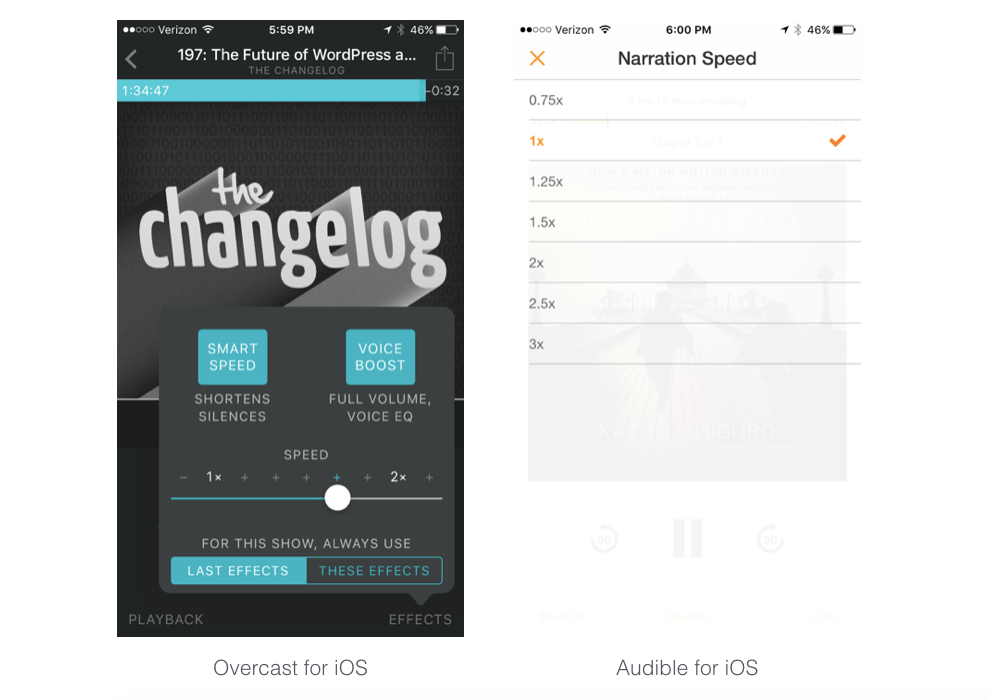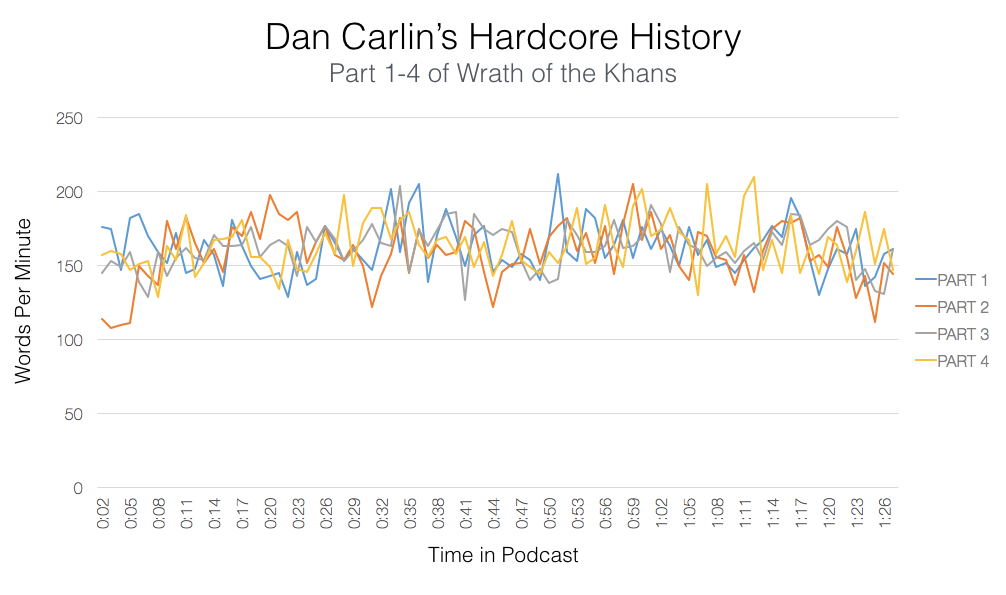Can we speed-listen and still understand?
[Originally posted on Medium]
Over the past couple of years, I’ve started to consume more and more information through spoken audio — the explosion of new podcasts and the production of great audiobooks has made listening to that content an irreplaceable part of commuting, exercising, or relaxing.
Very early on in my listening journey, I encountered a temptation that all podcast junkies are forced to face: the speed slider. In Overcast, I can increase the speed to a blistering 2x. The Audible app supports 3x speed, which is approaching “Motormouth” John Moschitta territory. For podcasts, I now hover around 1.7x and normal speed has become nearly unbearable.

As I’ve grown accustomed to higher speeds, I’ve wondered if the typical listener of audiobooks/podcasts can listen at greater than 1x speed without significant comprehension loss. At what point are speed-listeners short-changing their comprehension? Based on the research I was able to find, not only is it possible to comprehend spoken audio at significantly higher-than-normal rates of speed, the average person can train themselves to improve comprehension and actually prefers listening at a rate of speed that is higher than normal.
We are amazing listeners
Starting in the late fifties, researchers began experimenting with time-compressed speech and measuring the ability of subjects to comprehend material at high rates of compression. They determined that the average adult can readily comprehend spoken audio at 2X speed or at a compression rate of 50% [1]. This roughly corresponds to 275 words per minute. Although compression rate is a more helpful guide, words per minute is a good proxy that keeps things simple. Given that the typical conversational speaking rate ranges from 140–180 words per minute, we usually are able to comprehend even the fastest talkers [2].
Now how does this translate to audiobooks and podcasts? A middle value of 150 wpm seems like a reasonable estimate for the average audiobook, and aligns with the research I did. However, because podcasts are more tightly edited and are much more conversational, my hunch was that the wpm rate would be on the higher end. This was proven out through analyzing transcripts for several podcasts I listen to. I selected several episodes on YouTube that have automatic captions enabled and then wrote a ruby script to parse the subtitle files. Here’s a graph for Dan Carlin’s Hardcore history:

We see that episodes hover in the 140–190 wpm range. At a 1.5x speed, we’d see roughly 240–285 wpm which is close to the 275 wpm ceiling. Provided that the material being listened to isn’t overly complex (e.g. a conversational podcast), it is well within the average person’s ability to process a typical podcast at 1.5x speed.
We can improve our listening comprehension
Another remarkable discovery is that our ability to listen and comprehend at high rates of speed is a highly improvable skill. According to time-compression research, with as little as 8–10 hours of training, we can comprehend material at “substantially higher speeds” than 2x [3]. While I’m not clear on the specifics of what kinds of training would facilitate significant improvement, it seems reasonable that listening to one season of Serial (or any enjoyable podcast) at faster than 1x could yield increasing comprehension benefits for the listener.
This is further emphasized in a study that looked at blind students and their preferred rate of listening to college lectures. Researchers found that their preferred rate ranged from 236–275 wpm [4]. Given their focus on listening as a primary sensory input, they were able to comfortably process information far faster than most people can comfortably speak. Presumably this was a learned skill, based on necessity.
We have a natural preference for speed
Finally, it is comfortable on some level to listen to spoken audio at a faster than normal speaking rate. In the last study I mentioned, sighted students were also tested and their preferred rate of listening was 212 wpm (82% compression). Once we realize we can “increase the communication capacity of the ear”, it becomes pleasurable and natural to listen at a higher rate of speed.
What now?
Given that speed-listening is a valid way to increase our learning per minute spent, we can view it as a valuable tool at our disposal. However, when comprehension or pure enjoyment are ultimately the goal, the speed with which we listen should be adjusted to meet our own personal objectives. To modify a line from Mortimer Adler’s How to Read a Book:
“Every [podcast] should be [listened to] no more slowly than it deserves, and no more quickly than you can [listen to] it with satisfaction and comprehension.”
This quote is a great guide as I choose what to listen to and how to listen to it. It’s in the back of my mind when I play Never Let Me Go at an enjoyable 1x speed. And it clears my guilt when flying through Marc Maron, Tim Ferriss, or Ben Thompson at 1.7x. And most importantly, it’s what causes me to sometimes stop the audiobook and pick up a good old fashioned paperback.
Sources
[1][2] Cognitive Factors in Auditory Performance : Context, Speed of Processing, and Constraints of Memory — Arthur Wingfield, Journal of Audiology (1996)
[3] Microsoft Research: Time-Compression: Systems Concerns, Usage, and Benefits
[4] Techniques, Perception, and Applications of Time-Compressed Speech — Barry Arons, MIT Media Labs